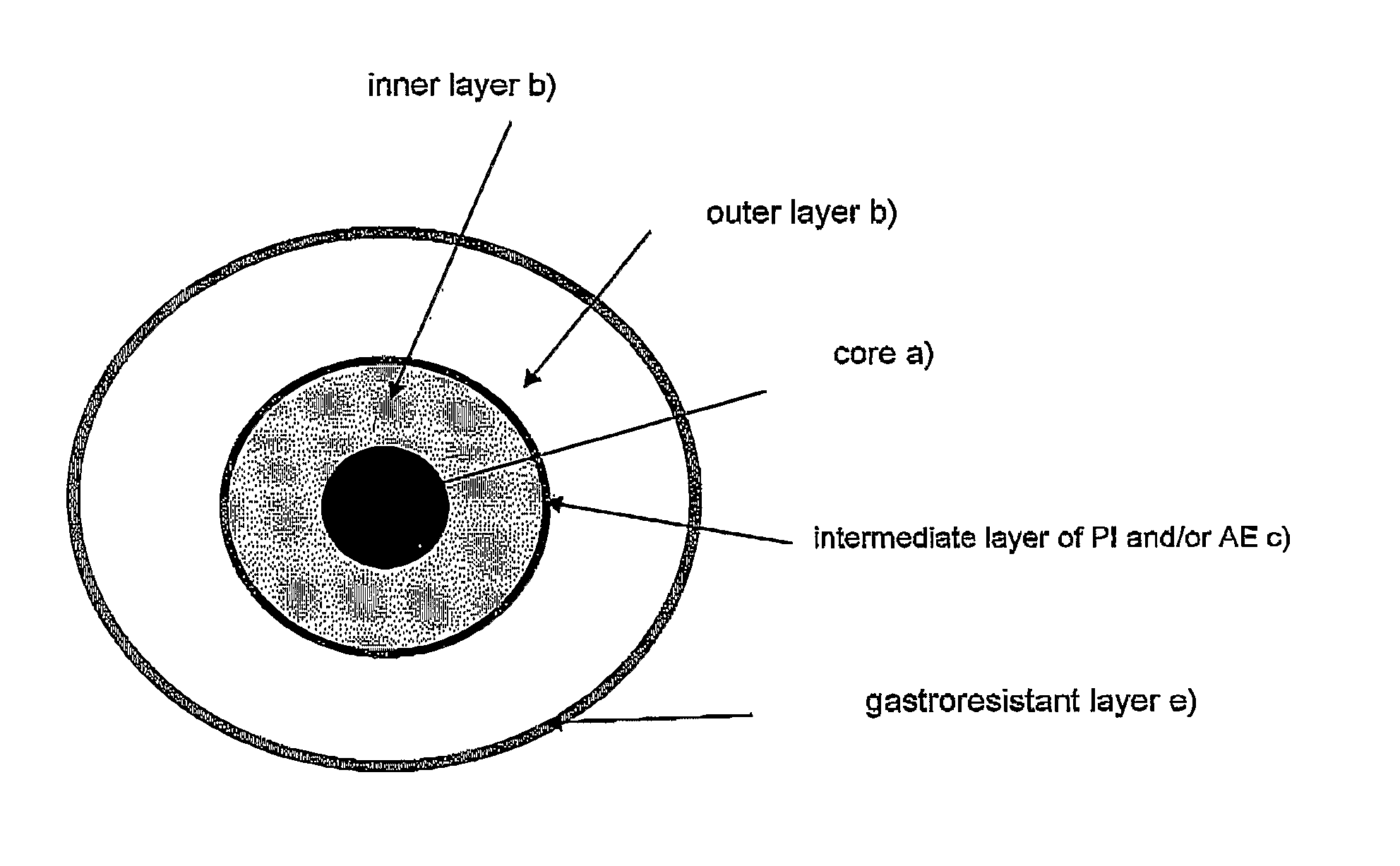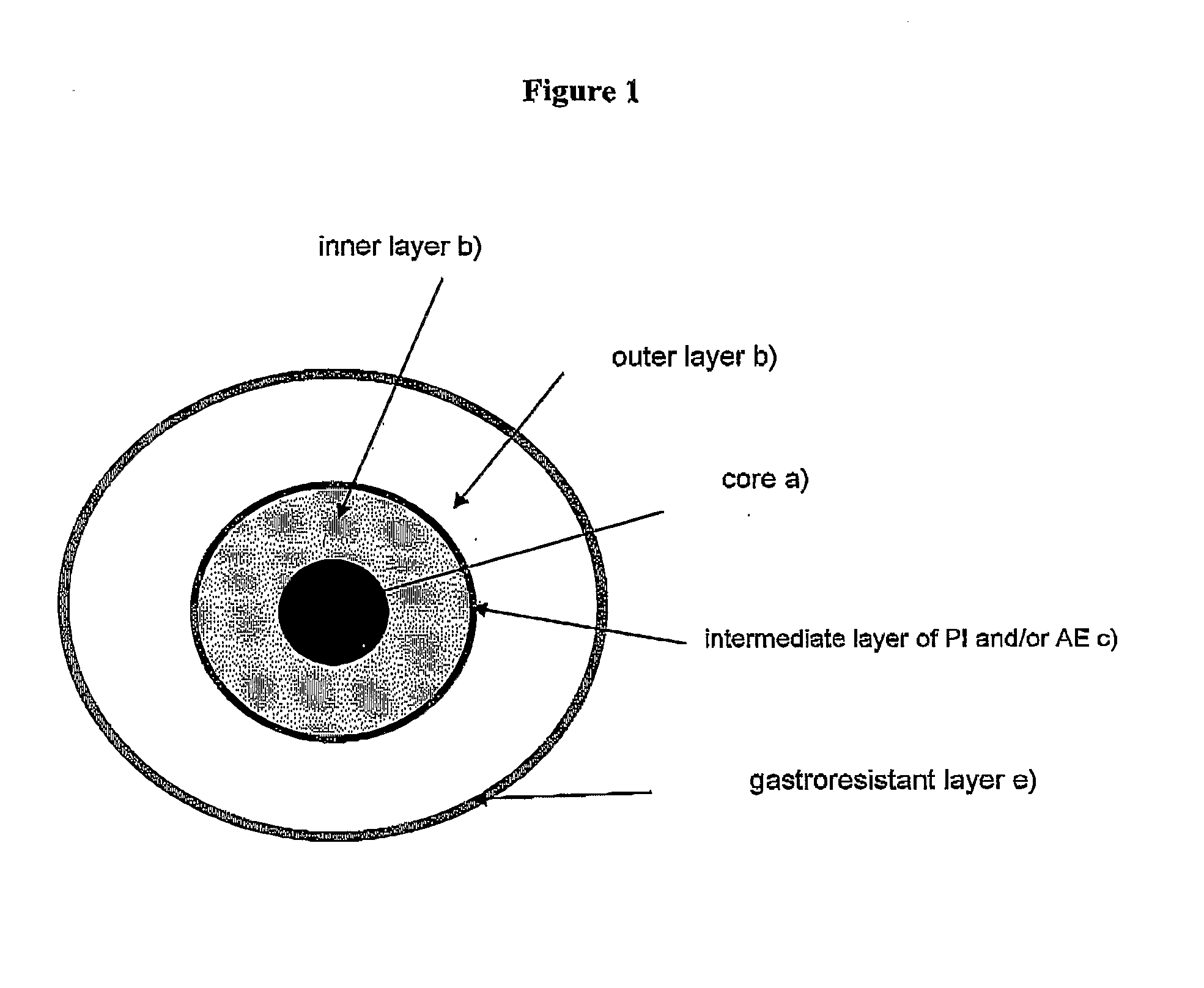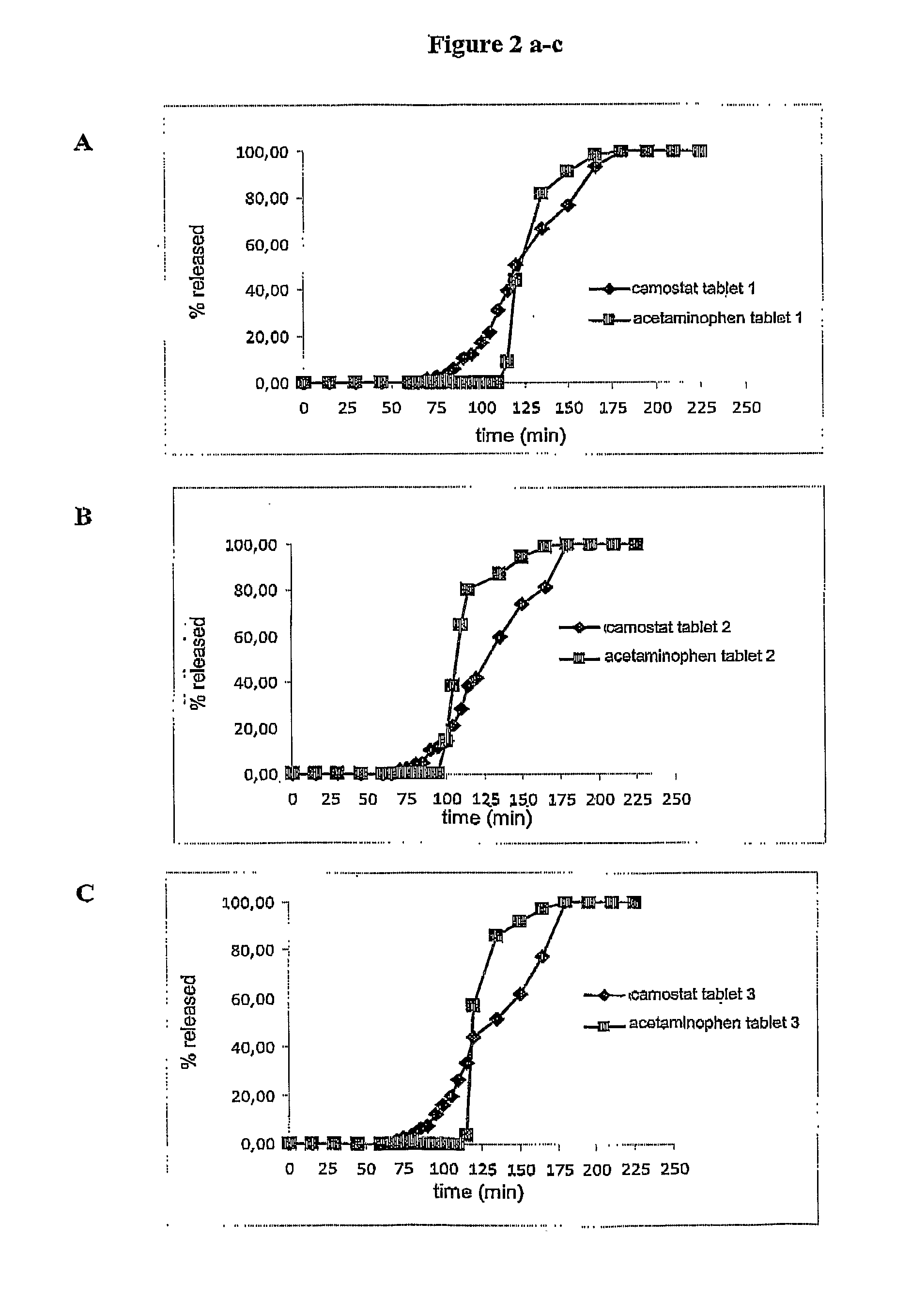System for the colon delivery of drugs subject to enzyme degradation and/or poorly absorbed in the gastrointestinal tract
a technology of enzyme degradation and colon delivery, which is applied in the direction of biocide, plant growth regulator, animal/human protein, etc., can solve the problems of poor industrial scale-up prospects and less favorable sites for protein and/or peptide absorption
- Summary
- Abstract
- Description
- Claims
- Application Information
AI Technical Summary
Benefits of technology
Problems solved by technology
Method used
Image
Examples
example 1
Preparation of Systems Containing Acetaminophen and Camostat Mesilate (5 mg)—Thickness of the Inner Hydrophilic Layer b): 158 μm; Intermediate Layer c): 60 μm; Outer Hydrophilic Layer d): 546 μm
[0051]The core tablets were obtained by direct compression of powder mixtures containing acetaminophen (80% w / w), polyvinylpyrrolidone (2% w / w), microcrystalline cellulose (12.5% w / w), sodium carboxymethylstarch-Explotab (4.5% w / w), magnesium stearate (0.5% w / w) and colloidal silica (0.5% w / w).
[0052]The cores were coated in top spray fluid bed with an aqueous low-viscosity HPMC solution (Methocel E50, 8% w / w) containing PEG 400 (0.8% w / w) until a 13% weight gain (thickness 158 μm) was reached with respect to the starting substrate. These systems were further coated in rotating pan with an aqueous camostat mesilate solution (3.3% w / w) containing PEG 400 (0.3% w / w), in order to load 5 mg of camostat mesilate per tablet, and then subjected to the last coating process in top spray fluid bed with ...
example 2
Preparation of Systems Containing Acetaminophen and Camostat Mesilate (5 mg)—Thickness of the Inner Hydrophilic Layer B): 248 μm, Intermediate Layer c): 83 μm; Outer Hydrophilic Layer d): 441 μm
[0055]The core tablets were obtained by direct compression of powder mixtures containing acetaminophen (80% w / w), polyvinylpyrrolidone (2% w / w), microcrystalline cellulose (12.5% w / w), sodiumcarboxymethylstarch-Explotab (4.5% w / w), magnesium stearate (0.5% w / w) and colloidal silica (0.5% w / w).
[0056]The cores were thus coated in top spray fluid bed with an aqueous low-viscosity HPMC solution (Methocel E50, 8% w / w) containing PEG 400 (0.8% w / w) until a weight gain of 25% (thickness 248 μm) with respect to the starting substrate was achieved. The resulting systems were subsequently coated in rotating pan with, an aqueous camostat mesilate (3.3% w / w) solution containing PEG 400 (0.3% w / w), in order to load 5 mg of camostat mesilate per tablet, and then subjected to the last coating process in top...
example 3
Preparation of Systems Containing Acetaminophen and Camostat Mesilate (5 Mg)—Thickness of the Inner Hydrophilic Layer b): 434 μm; Intermediate Layer c): 66 μm; Outer Hydrophilic Layer d): 283 μm
[0059]The core tablets were obtained by direct compression of powder mixtures containing acetaminophen (80% w / w), polyvinylpyrrolidone (2% w / w), microcrystalline cellulose (12.5% w / w), sodium carboxymethylstarch-Explotab (4.5% w / w), magnesium stearate (0.5% w / w) and colloidal silica (0.5% w / w).
[0060]The cores were thus coated in top spray fluid bed with an aqueous low-viscosity HPMC solution (Methocel E50, 8% w / w) containing PEG 400 (0.8% w / w) until a weight gain of 50% (thickness 434 μm) with respect to the starting substrate was achieved. The resulting systems were subsequently coated in rotating pan with an aqueous camostat mesilate (3.3% w / w) solution containing PEG 400 (0.3% w / w), in order to load 5 mg of camostat mesilate per tablet, and then subjected to the last coating process in top...
PUM
| Property | Measurement | Unit |
|---|---|---|
| thick | aaaaa | aaaaa |
| thick | aaaaa | aaaaa |
| thick | aaaaa | aaaaa |
Abstract
Description
Claims
Application Information
 Login to View More
Login to View More - R&D
- Intellectual Property
- Life Sciences
- Materials
- Tech Scout
- Unparalleled Data Quality
- Higher Quality Content
- 60% Fewer Hallucinations
Browse by: Latest US Patents, China's latest patents, Technical Efficacy Thesaurus, Application Domain, Technology Topic, Popular Technical Reports.
© 2025 PatSnap. All rights reserved.Legal|Privacy policy|Modern Slavery Act Transparency Statement|Sitemap|About US| Contact US: help@patsnap.com



